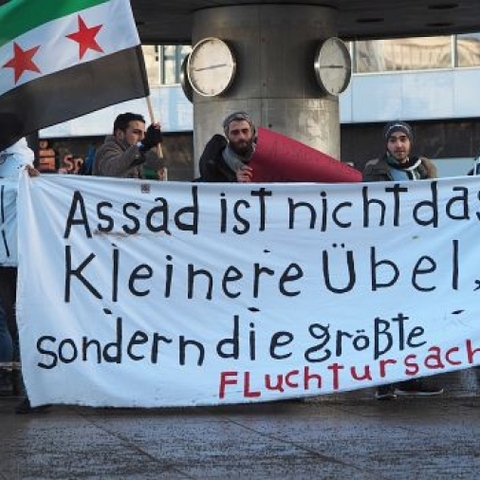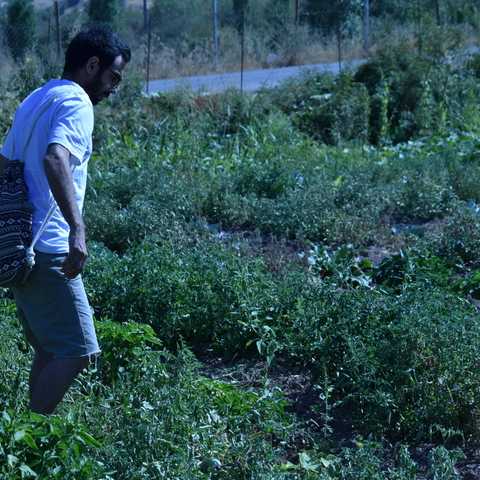Contemporary Migrant and Refugee Image and the Spatial Fix: Exploring Narratives of Racism and Guilt
Twentieth Annual Historical Materialism Conference The Cost of Life Oppression, Exploitation and Struggle in the Time of Monsters
Introduction:
Abstract
Relying on extensive fieldwork, this article provides a summary of research exploring the interconnectedness of image, imagination, and space, with a specific focus on the experiences of migrants and refugees. It investigates the intricate relationship between economic development, geography, and narratives surrounding guilt and racism within a capitalist system. Through the analysis of political ideologies, media representation, social discourse, and historical experiences, the research sheds light on the social, economic, and political implications of the spatial fix. Drawing on the concept developed by David Harvey, the spatial fix highlights the reorganization of production, investment, and consumption patterns, often perpetuating uneven development. Furthermore, the study delves into how geography and economic development contribute to shaping place identity and social cohesion, particularly in the context of evolving economic landscapes and demographic shifts. By exploring a case study from Lebanon, the research underscores the context-specific nature of these dynamics and emphasizes the need for a nuanced understanding of their complexities.
In essence, the experiences of migrants and refugees are deeply entwined with the dynamic interplay of image construction, imaginative processes, and spatial configurations.
The theoretical foundation of the paper revolves around the spatial fix concept developed by David Harvey, a geographer, and Marxist scholar. The spatial fix denotes a process in which capitalist economies address crises and contradictions by restructuring the spatial arrangement of production, investment, and consumption. This concept holds particular significance in comprehending how economic restructuring fosters uneven development within and among regions. The spatial fix, as envisioned by David Harvey, is a dynamic process wherein capitalist economies reconfigure their spatial setups in response to economic challenges. This reorganization entails the relocation of production, investment, and consumption, thereby contributing to the uneven development of regions within the capitalist system. The spatial fix stands as an essential concept for elucidating the geographical dynamics of capitalism and the persistent disparities in economic development.
Historical experiences intricately contribute to the spatial fix and its implications, profoundly shaping the spatial dynamics of migration and influencing the development of spaces where migrants settle (Harvey, 2001; Jacobs, 1992; Lefebvre, 1991; Massey, 2005; Smith, 1984; Soja, 2011). The colonial legacy influences migration patterns, fostering the establishment of diaspora spaces in former colonial powers (Bhabha, 1994; Chakrabarty, 2007; Gilroy, 1993; Hall, 1993). Forced migrations and displacement, stemming from historical events like wars, contribute to the spatial fix, manifesting in semi-permanent or permanent refugee settlements (Lefebvre, 1991). Urbanization and industrialization, products of historical processes, concentrate economic activities in specific regions, creating distinct urban centers attracting migrants (Castells, 1983; Harvey, 2001; Jacobs, 1992; Lefebvre, 1991; Weber, 1986). Post-war reconstructions reshape urban and rural spaces, affecting settlement patterns. Historical trade routes and globalization establish migration corridors, forming well-trodden routes (Clifford, 1997). Cultural migrations and diasporas create areas with strong cultural identity, while borderland histories result in zones with unique characteristics (Anderson, 2006). Post-colonial nation-building concentrates populations in capital cities, and historical discrimination influences settlement patterns. The legacy of slavery and forced labor impacts demographics, and historical memory influences preferences for settlement. Post-conflict reconciliation efforts contribute to rebuilding social fabric and impact spatial organization (Balibar, 2002; Soja, 1996). In summary, historical experiences are integral to understanding the complexities of spatial arrangements, migration patterns, and their wide-ranging implications for social, economic, and political structures (Anderson, 2006; Harvey, 2001; Jacobs, 1992; Lefebvre, 1991; Massey, 2005; Soja, 2011; Wallerstein, 2004).
"With climate change we all become nomads" Hermann Josef Hack.
Refugees and migrants are integral components of the global landscape, representing a complex and multifaceted challenge that demands a comprehensive understanding of their definitions, historical context, and current realities. Gil Loescher's pioneering contributions, such as his influential work "Beyond Charity: International Cooperation and the Global Refugee Crisis" (Loescher, 1993) and “Refugees: A Very Short Introduction” (Loescher, 2007), have laid the foundation for the discipline of refugee and forced migration studies.
Refugees, as defined by the 1951 Refugee Convention, are individuals who have fled persecution and conflict in their home country, no longer enjoying the legal protections afforded to citizens. This convention mandates that refugees should have access to national courts, employment, education, and various social, economic, and civil rights on par with host country nationals. The distinctions between refugees, asylum seekers, and internally displaced persons (IDPs) are critical, collectively referred to as forced migrants.
The historical trajectory of refugees’ traces back to periods of human history marked by political, ethnic, and religious persecution, wars, and societal displacement. The contemporary global refugee regime, evolving since the late 1940s, is governed by the 1951 Refugee Convention, with the United Nations High Commissioner for Refugees (UNHCR) as its core institution.
Refugee movements are primarily caused by factors such as intolerance, changing conflict dynamics, misinformation, technologies of war, complex emergencies, famine, and international war crimes. The majority of global refugee movements result from internal conflicts, ethnic cleansing, socio-economic inequalities, and, increasingly, conflict-induced famine and climate change.
The global refugee system, anchored in the 1951 Refugee Convention and administered by UNHCR, faces challenges in responding to refugee movements due to the changing international political system, expanding global mobility, and a diverse displaced population.
As of mid-2023, the global forced displacement figure exceeds 110 million, with over 36.4 million refugees. In the Middle East and North Africa (MENA) region, Turkey hosts the largest number of refugees, predominantly from Syria. Understanding the legal distinctions between refugees and migrants is crucial, as migrants move voluntarily to improve their lives. The refugee crisis, historically rooted, highlights the importance of shared responsibility, collective action, and the active participation of refugees in finding lasting solutions.


